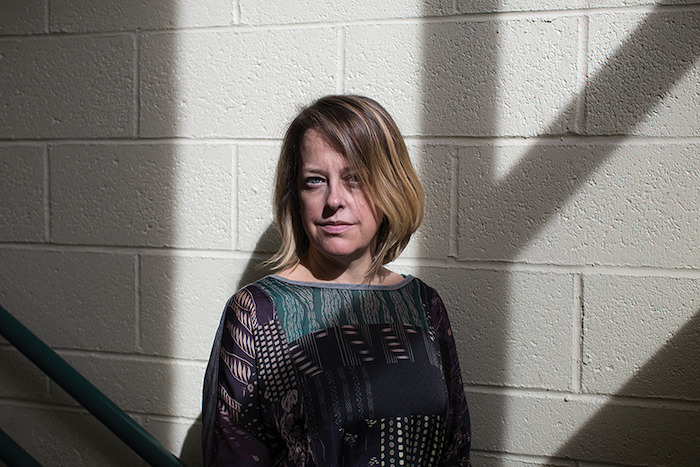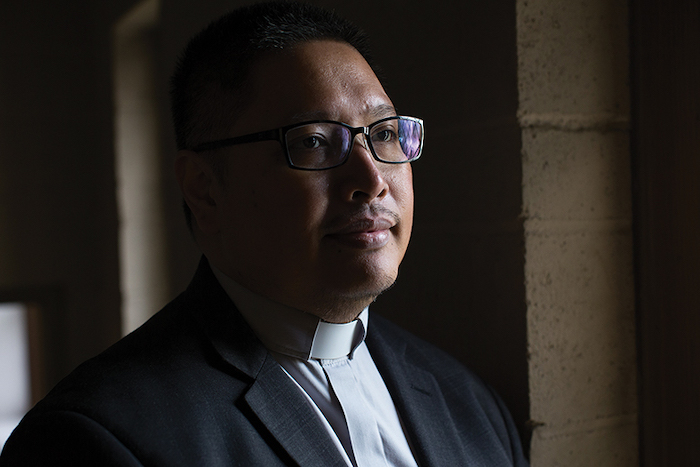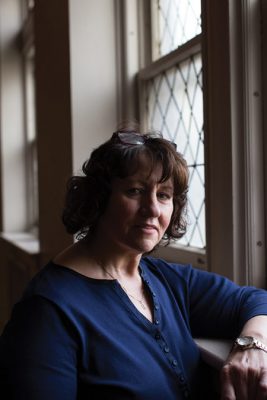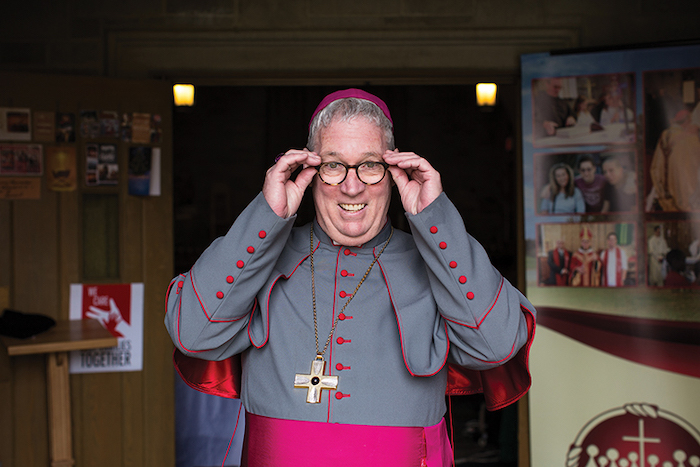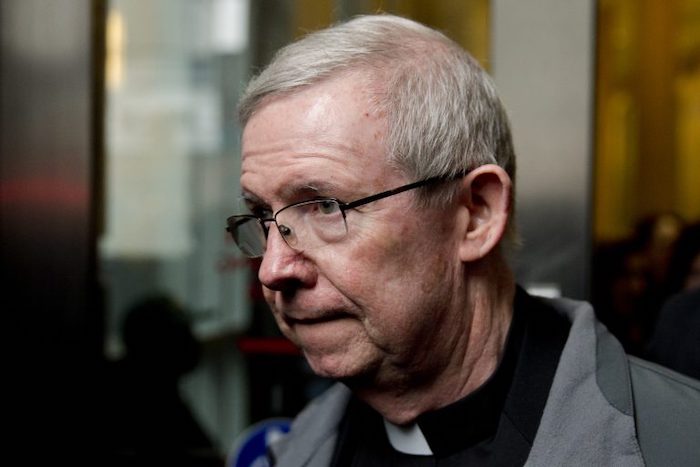
By Ian Nawalinski
In 1995, the United States Conference of Catholic Bishops commissioned an internal church study on child abuse. The two-volume study surveyed bishops in more than 100 dioceses nationwide about their use of treatment centers to assess and care for priests believed to be sexually abusing children.
The result: 87% of bishops (127 out of 145 dioceses surveyed) reported using treatment centers for clergy accused of child abuse.
Two decades later, following the August release of the Pennsylvania grand jury report on sex abuse in the Catholic Church — one of three released by the state attorney general since early 2000 — dioceses in multiple states and at least one state attorney general have disclosed their own lists of credibly accused priests.
The Pennsylvania report focuses on many small towns throughout the state. One of those towns — mentioned more than a dozen times — is an outlier. It’s a town you wouldn’t think to look for unless, like me, you were born and raised there.
In 2002, around the same time the Boston Globe published its bombshell report on sexual abuse of children in Archdiocese of Boston, I was a freshman at Bishop Shanahan, a Catholic high school in Downingtown, Pennsylvania.
I don’t remember paying much attention to the Boston Globe report. Nor was I aware that, during this same time, multiple priests accused of child abuse were being sent to a clergy treatment center directly across the street from my high school.
Downingtown is home to the longest-running behavioral health facility in North America still in use by the Catholic Church. It’s a place where — according to the reports — at least 50 priests accused of molesting children in Pennsylvania were referred for evaluation and treatment.
That treatment time was often referred to in their employment history as “sick leave,” and many priests were inevitably discharged and permitted to return to active ministry. Others were transferred to church-run retirement homes where they received fully paid benefits. The church commonly called that retreat a “life of prayer and penance.”
St. John Vianney Center
Founded in 1946, the St. John Vianney Center in Downingtown is staffed by clergy, psychologists, and nurses. It offers inpatient and outpatient services for behavioral and emotional issues, addiction, compulsive behaviors, and weight management. It is fully funded and administered under the purview of the Archdiocese of Philadelphia.
In detail, the grand jury report — much like the 1995 USCCB study — offers rare insight into the church’s use of “treatment” centers, the psychiatric facilities for clergy with addiction, depression, and sexual disorders, among other conditions. According to the grand jury report, the Catholic Church used these treatment centers to “launder accused priests, provide plausible deniability, and permit hundreds of known offenders to return to ministry.”
The report goes on further to state that Catholic bishops relied on three treatment centers in particular: Servants of the Paraclete in Jemez Springs, New Mexico; St. Luke’s in Suitland, Maryland; and St. John
Vianney Center. All three remain open.
Downingtown, less than an hour south of Philadelphia, is no stranger to scandal involving the church. Most recently, in 2017, a pastor at the nondenominational Calvary Fellowship Church, across the street from Downingtown East High School, pleaded guilty to institutional sex assault, corruption of minors, and child
endangerment after sexually assaulting and impregnating a teenage girl. He was sentenced to up to six years in prison.
Five years earlier, Monsignor William Lynn — who was serving at St. Joseph’s parish across the street from Downingtown West High School — became the first high-ranking U.S. Catholic Church official to be convicted of covering up clergy sex abuse. In addition to three priests and a parochial school teacher, Lynn was
charged and convicted of one count of endangering the welfare of a child. He is now free after serving nearly three years of his three- to six-year sentence. He may face another trial on the charges this year.
St. Joseph’s Church in Downingtown remains the second largest parish in the Archdiocese of Philadelphia. The recently renovated facade, with its towering white steeple, sits just off Route 322. Every Sunday, parishioners fill the parking lot before Mass. Every summer, the same lot is transformed into the annual Community Festival: a five-day carnival that is a hallmark of the small suburb.
On the opposite side of town is St. John Vianney Center. Unlike St. Joseph’s parish, on display as a beacon to area Catholics, the treatment center is hidden from public view. It sits at the end of a long driveway at the top of a hill, surrounded by trees and nestled between a country club and Bishop Shanahan High School across the street.
The only clue toward its existence is a small sign outside the entrance. It’s a fitting appearance for a place shrouded in a culture of secrecy characteristic of the church itself.
A look at two cases
One of the four men charged along with Lynn in 2012 was the Rev. Edward Avery, who received treatment at St. John Vianney over the course of four days from Nov. 30 to Dec. 3, 1992. Following his evaluation, the treatment center recommended further in-patient care. Philadelphia Cardinal Anthony Bevilacqua, who had allowed Avery to remain in active ministry for nearly 11 months after his victim first reported the abuse to the archdiocese, approved the recommendation.
Avery was discharged from St. John Vianney on Oct. 22, 1993. In a memo to the church, Lynn shared the treatment center’s recommendations for Avery, which included a ministry excluding adolescents and with a population other than vulnerable minorities. The treatment center also advised that an aftercare team supervise Avery.
Yet Lynn recommended that Avery return to a parish with an elementary school, and Bevilacqua ultimately agreed. Avery would later testify before the grand jury that he continued to celebrate Mass, with altar servers, usually twice a weekend. He heard the confessions of children and was never told to restrict his activities with the youth of the parish.
The aftercare team that was supposed to be supervising Avery didn’t meet with him for more than a year after he ended treatment. Furthermore, the chaplain at St. John Vianney warned Lynn that Avery was “neglecting his duties” and instead “booking numerous disc jockey engagements” to gain access to children. Avery remained in active ministry until Dec. 5, 2003, a decade after first receiving treatment.
Avery’s case is one of many revealing exactly how the Catholic Church used St. John Vianney and other treatment centers to launder accused priests and, in some cases, return them to ministry in defiance of the treatment center’s own recommendations.
And while it’s worth noting that many of the allegations contained within the grand jury report are from decades ago, the case studies involving treatment centers cover allegations ranging from as early as the 1960s to as recent as 2004.
In a separate case, on April 22, 2004, diocesan documents show that Pennsylvania State Police searched the room of the Rev. Ronald Yarrosh — then assistant pastor at St. Ambrose in Schuylkill Haven — and found a “tremendous amount” of child pornography.
A week later, he was suspended from ministry and placed into treatment at St. John Vianney.
Across the street, I was just about to finish my sophomore year of high school.
On May 12, 2004, State Police filed charges: 110 counts of sexual abuse of children. Yarrosh was sentenced pursuant to a negotiated plea agreement that included three to 23 months in prison. He was discharged from St. John Vianney on May 3, 2005, and was later incarcerated for nearly four months until his release on Dec. 6, 2005, as a convicted and registered sex offender.
According to the grand jury report, upon his release, Yarrosh remained a member of the priesthood and the diocese granted him residence at a retirement home for priests in Orwigsburg — only a few miles from St. Ambrose parish where he had been arrested two years earlier.
In 2006, according to the grand jury report, Yarrosh took trips to New York City with a 7-year-old. Yarrosh was also found to be in possession of pornography in violation of his court supervision. He was sentenced to
four to 10 years in state prison. In June 2007, the Yarrosh was finally dismissed from the priesthood.
The current president of St. John Vianney, David Shellenberger, did not return requests for an interview.
Time for a mea culpa
I’ve driven past St. John Vianney hundreds of times in my life. I spent four years, every day, directly across the street. And yet, I never knew what that place was until I discovered it on my own, by accident, reading the grand jury report.
Much like the abusive priests written about in the reports, the truth was always hiding in plain sight. If the Catholic Church is serious about reform within the priesthood, it will do more than simply condemn the accused.
The church must acknowledge and recognize that bishops across the country have, for decades, institutionalized a culture that not only fosters abusive priests but also aims to protect the accused and silence victims. Simply put, the only reason child abuse has become an epidemic is because the Catholic Church has allowed it to happen.
What the #MeToo era revealed, beyond a litany of heinous acts committed by sexual predators, is that the allegations themselves rarely tell the full story. Instead — whether it be the Catholic Church or Michael Jackson or Jeffrey Epstein — the full story often involves those in power exploiting their influence and privilege to circumvent the criminal justice system and maintain the appearance of infallibility.
Perhaps the first step toward reform in the Catholic Church is a collective confirmation that members of the clergy are no more pious than anyone else. They are, in fact, only human — some of them deeply flawed — and all of them in need of self-reflection.
Perhaps, a life of prayer and penance is in order.
Complete Article ↪HERE↩!





